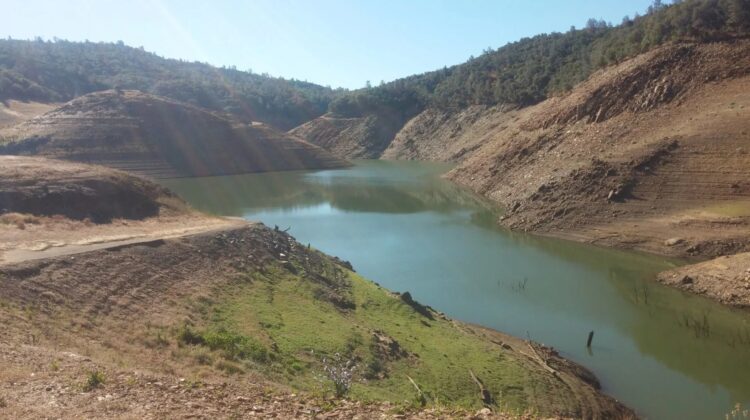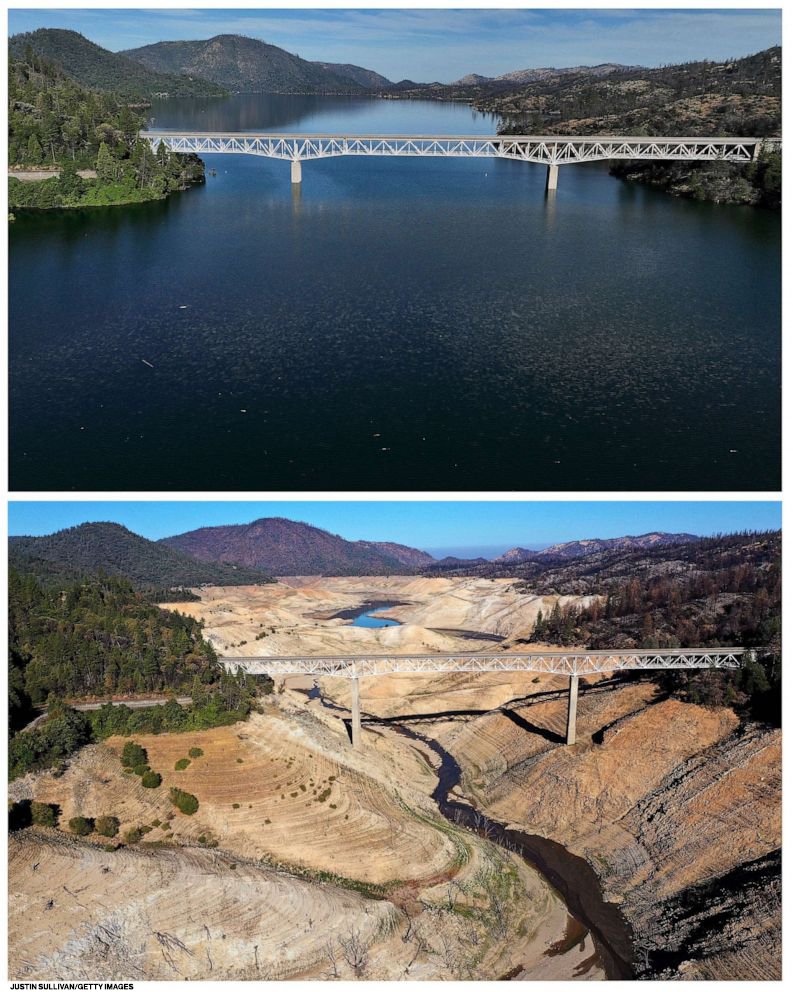
In the midst of California’s recent climate rollercoaster, marked by devastating wildfires, severe droughts, and floods, a surprising turn of events offers a glimmer of hope. The Golden State’s two major reservoirs, Lake Shasta and Lake Oroville, once resembling desolate “zombie lakes,” have undergone a remarkable revival.
Data from the Los Angeles Times indicates that both reservoirs are now 86% full, a stark contrast from late last year when they languished at a mere 35% capacity. However, it’s the before-and-after photos that vividly capture the astounding transformation. September 2021 images of Lake Shasta depict a bone-dry valley, while those from April 2023 showcase a landscape so dramatically altered that one might struggle to recognize the same location.

Lake Oroville shares a similar narrative, with stark differences between images taken during the drought and those capturing the resurgence of water. The images highlight the tangible impact of record-breaking rain and snowpack during the winter.
Fresno County farmer David “Mas” Masumoto expressed his amazement, stating, “It’s been a wild year. We forget, November and December, it looked like another drought. We all braced for that and planned for that.” The unexpected abundance of water has allowed farmers to rely on canals and irrigation ditches rather than depleting groundwater.

While this reversal offers temporary relief, scientists predict a future defined by California’s climate oscillating between years of drought and extremely wet periods like 2023. The challenge now lies in devising strategies to maximize rainwater capture during these wet seasons.
The climate shifts align with the scientific principle of “dry gets drier, wet gets wetter,” characterizing the increasing extremity of weather patterns amid global climate changes. While relying on climate change to balance itself out isn’t a sustainable plan, California has, for now, received a reprieve from the ravages of prolonged drought.

Leave a Reply